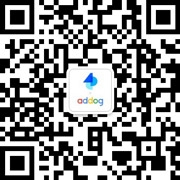
本案例默认翻译为中文,点击可切换回原语言
已切换成原语言,点击可翻译成中文
图像测试
案例简介:结果 Reach: 如果我们在脸谱网、推特和 YouTube 上 (超过 100 人) 找到这篇文章,并将其添加到媒体报道中, 在几十个新闻广播、电视节目、新闻网站和在线杂志上自由播放 (超过 120 人),我们可以说,在一周结束时,实验已经达到 2亿多人。订婚: 这是 2016年 Facebook 在巴西分享最多的广告。仅在 Facebook 上,它就拥有超过 440,000 的有机股票。这部电影在推特、 WhatsApp 和 YouTube 上有成千上万的股份。传统媒体也在关于种族主义的新闻报道中使用了这部电影。这部电影不止一次成为巴西每个电视频道的新闻,包括全国最重要的新闻频道 Jornal Nacional。 概要 情况: 54% 的巴西人是黑人。然而,黑人仍然是就业市场中的少数。统计数据让机构种族主义变得非常清楚: 82.6% 的黑人说肤色影响了他们在就业市场上的位置。黑人平均比同样角色的白人收入少 37%。简介: 黑人在职业生涯中遭受偏见,但社会不愿意谈论它。制度种族主义从来不是一个话题。我们需要让这个话题与社会相关,解释什么是制度种族主义以及它是如何运作的。克服偏见的最大障碍是打破沉默,与社会展开辩论。目标: 提高巴西社会对这一主题的认识,并开始全国范围内关于机构种族主义的辩论。 战略 数据收集: 基于研究,我们收集了关于制度种族主义如何干扰职业发展的统计数据。我们研究了在家庭、朋友和学校三个社会领域讨论种族主义时出现的最常见的话题。这些数据被用来开发这块。目标受众: 我们将受众分为三组: 整个社会、活动家和记者。为了接触整个社会,我们开发了我们的在线视频。对活动家来说,除了这部电影,我们还发送了关于如何传播信息的支持材料。我们向记者发送了一个数字新闻工具包。相关平台: 这篇文章是为了在社交媒体上传播而开发的。因此,我们使用四个平台有机地启动和放大: 脸谱网、推特、 WhatsApp 和 YouTube。方法: 这部电影是在国家黑人意识日的前一天上映的。这增加了人们分享它的愿望,以及新闻界的兴趣。 活动描述 对于形象测试,我们选择了八名人力资源专业人员负责为他们的公司招聘。他们被分成两组。第一组看到白人在普通情况下的照片。第二组看到了完全相同情况的照片,但有黑人。在测试结束时,结果与预期的一样: 第二组中的每个人力资源专业人员都描述了社会地位较低的黑人。整个实验都是真实的,使用的是身份受到保护的真正专业人士。 执行 实施: 第一个实施阶段包括在国家黑人意识日前一天将电影上传到巴拉那州政府的 Facebook 页面。然后,我们将材料发送给影响者,并将新闻资料袋发送给媒体。时间线: 一小时内,这部电影在 Facebook 上的浏览量超过 100万次。两个小时后,它的浏览量超过 300万,新闻网站开始谈论它。第二天,这已经是 2016年 Facebook 在巴西分享最多的广告。接下来,它在传统媒体上。位置: 这部电影继续在网上传播 (脸谱网、推特、 WhatsApp 、 YouTube 、博客和在线媒体),在上映一周后达到顶峰。今天,它仍然在较小规模上被共享。规模: 我们的电影达到 2亿多人。这个数字相当于巴西的全部人口。这部电影在巴西的每个电视频道免费播出。制度种族主义在全国范围内引起了辩论。
图像测试
案例简介:Outcome Reach: If we take the reach of the piece on Facebook, Twitter and YouTube (over 100 M people reached) and add it to the media coverage it got, being aired freely on dozens of newscasts, TV shows, news sites and online magazines (over 120 M people reached), we can say that, at the end of one week, the experiment had reached more than 200 million people. Engagement: This was Facebook’s most shared ad in Brazil in 2016. It had over 440,000 organic shares on Facebook alone. The film had thousands more shares on Twitter, WhatsApp and YouTube. Traditional media also used the film in news pieces on the topic of racism. The film became news in every Brazilian TV channel, more than once, including Jornal Nacional, the nation’s most important newscast. Synopsis Situation: 54% of Brazilians are black. However, black people are still a minority in the job market. The statistics make institutional racism very clear: 82.6% of black people say skin color affects their placement on the job market. Black people earn on average 37% less than white people in the same roles. Brief: Black people suffer prejudice throughout their professional lives, but society is not willing to talk about it. Institutional racism is never a topic of conversation. We needed to make this topic relevant to society, explain what is institutional racism and how it works. The biggest obstacle in overcoming prejudice is breaking the silence and raising the debate with society. Objectives: To raise awareness of the topic within Brazilian society and start a nation-wide debate on institutional racism. Strategy Data Gathering: Based on research, we gathered statistical data on how institutional racism interferes with career progression. We studied the most common topics that arise when racism is discussed within three social spheres: family, friends and school. These data were used to develop the piece. Target Audience: We divided our audience into three groups: society as a whole, activists and journalists. To reach society as a whole, we developed our online video. To activists, in addition to the film, we sent support material about how to spread the message. To journalists, we sent a digital press kit. Relevance Platform: This piece was developed to go viral on social media. Therefore, we launched and amplified organically using four platforms: Facebook, Twitter, WhatsApp and YouTube. Approach: The film was released the day before National Black Awareness Day. This increased people’s desire to share it, as well as the interest of the press. CampaignDescription For The Image Test, we selected eight Human Resources professionals in charge of recruiting for their companies. They were divided into two groups. Group 1 saw photos of white people in common situations. Group 2 saw photos of the exact same situations, but with black people. At the end of the test, the results were as expected: every HR professional in Group 2 described black people in inferior social positions.The whole experiment is real, using real professionals whose identities were protected. Execution Implementation: The first implementation stage consisted of uploading the film to the State Government of Paraná’s Facebook page the day before National Black Awareness Day. We then sent the material to influencers and press kits to the press. Timeline: Within one hour, the film had over 1 million Facebook views. Two hours later, it had over 3 million views, and news sites started talking about it. The next day, it was already Facebook’s most shared ad in Brazil in 2016. Next, it was on the traditional media. Placement: The film continued spreading online (Facebook, Twitter, WhatsApp, YouTube, blogs and online media), peaking one week after launch. Today, it is still being shared on a smaller scale. Scale: Our film reached over 200 million people. This number corresponds to the entire population of Brazil. The film was broadcast freely on every Brazilian TV channel. Institutional racism was debated across the nation.
The Image Test
案例简介:结果 Reach: 如果我们在脸谱网、推特和 YouTube 上 (超过 100 人) 找到这篇文章,并将其添加到媒体报道中, 在几十个新闻广播、电视节目、新闻网站和在线杂志上自由播放 (超过 120 人),我们可以说,在一周结束时,实验已经达到 2亿多人。订婚: 这是 2016年 Facebook 在巴西分享最多的广告。仅在 Facebook 上,它就拥有超过 440,000 的有机股票。这部电影在推特、 WhatsApp 和 YouTube 上有成千上万的股份。传统媒体也在关于种族主义的新闻报道中使用了这部电影。这部电影不止一次成为巴西每个电视频道的新闻,包括全国最重要的新闻频道 Jornal Nacional。 概要 情况: 54% 的巴西人是黑人。然而,黑人仍然是就业市场中的少数。统计数据让机构种族主义变得非常清楚: 82.6% 的黑人说肤色影响了他们在就业市场上的位置。黑人平均比同样角色的白人收入少 37%。简介: 黑人在职业生涯中遭受偏见,但社会不愿意谈论它。制度种族主义从来不是一个话题。我们需要让这个话题与社会相关,解释什么是制度种族主义以及它是如何运作的。克服偏见的最大障碍是打破沉默,与社会展开辩论。目标: 提高巴西社会对这一主题的认识,并开始全国范围内关于机构种族主义的辩论。 战略 数据收集: 基于研究,我们收集了关于制度种族主义如何干扰职业发展的统计数据。我们研究了在家庭、朋友和学校三个社会领域讨论种族主义时出现的最常见的话题。这些数据被用来开发这块。目标受众: 我们将受众分为三组: 整个社会、活动家和记者。为了接触整个社会,我们开发了我们的在线视频。对活动家来说,除了这部电影,我们还发送了关于如何传播信息的支持材料。我们向记者发送了一个数字新闻工具包。相关平台: 这篇文章是为了在社交媒体上传播而开发的。因此,我们使用四个平台有机地启动和放大: 脸谱网、推特、 WhatsApp 和 YouTube。方法: 这部电影是在国家黑人意识日的前一天上映的。这增加了人们分享它的愿望,以及新闻界的兴趣。 活动描述 对于形象测试,我们选择了八名人力资源专业人员负责为他们的公司招聘。他们被分成两组。第一组看到白人在普通情况下的照片。第二组看到了完全相同情况的照片,但有黑人。在测试结束时,结果与预期的一样: 第二组中的每个人力资源专业人员都描述了社会地位较低的黑人。整个实验都是真实的,使用的是身份受到保护的真正专业人士。 执行 实施: 第一个实施阶段包括在国家黑人意识日前一天将电影上传到巴拉那州政府的 Facebook 页面。然后,我们将材料发送给影响者,并将新闻资料袋发送给媒体。时间线: 一小时内,这部电影在 Facebook 上的浏览量超过 100万次。两个小时后,它的浏览量超过 300万,新闻网站开始谈论它。第二天,这已经是 2016年 Facebook 在巴西分享最多的广告。接下来,它在传统媒体上。位置: 这部电影继续在网上传播 (脸谱网、推特、 WhatsApp 、 YouTube 、博客和在线媒体),在上映一周后达到顶峰。今天,它仍然在较小规模上被共享。规模: 我们的电影达到 2亿多人。这个数字相当于巴西的全部人口。这部电影在巴西的每个电视频道免费播出。制度种族主义在全国范围内引起了辩论。
The Image Test
案例简介:Outcome Reach: If we take the reach of the piece on Facebook, Twitter and YouTube (over 100 M people reached) and add it to the media coverage it got, being aired freely on dozens of newscasts, TV shows, news sites and online magazines (over 120 M people reached), we can say that, at the end of one week, the experiment had reached more than 200 million people. Engagement: This was Facebook’s most shared ad in Brazil in 2016. It had over 440,000 organic shares on Facebook alone. The film had thousands more shares on Twitter, WhatsApp and YouTube. Traditional media also used the film in news pieces on the topic of racism. The film became news in every Brazilian TV channel, more than once, including Jornal Nacional, the nation’s most important newscast. Synopsis Situation: 54% of Brazilians are black. However, black people are still a minority in the job market. The statistics make institutional racism very clear: 82.6% of black people say skin color affects their placement on the job market. Black people earn on average 37% less than white people in the same roles. Brief: Black people suffer prejudice throughout their professional lives, but society is not willing to talk about it. Institutional racism is never a topic of conversation. We needed to make this topic relevant to society, explain what is institutional racism and how it works. The biggest obstacle in overcoming prejudice is breaking the silence and raising the debate with society. Objectives: To raise awareness of the topic within Brazilian society and start a nation-wide debate on institutional racism. Strategy Data Gathering: Based on research, we gathered statistical data on how institutional racism interferes with career progression. We studied the most common topics that arise when racism is discussed within three social spheres: family, friends and school. These data were used to develop the piece. Target Audience: We divided our audience into three groups: society as a whole, activists and journalists. To reach society as a whole, we developed our online video. To activists, in addition to the film, we sent support material about how to spread the message. To journalists, we sent a digital press kit. Relevance Platform: This piece was developed to go viral on social media. Therefore, we launched and amplified organically using four platforms: Facebook, Twitter, WhatsApp and YouTube. Approach: The film was released the day before National Black Awareness Day. This increased people’s desire to share it, as well as the interest of the press. CampaignDescription For The Image Test, we selected eight Human Resources professionals in charge of recruiting for their companies. They were divided into two groups. Group 1 saw photos of white people in common situations. Group 2 saw photos of the exact same situations, but with black people. At the end of the test, the results were as expected: every HR professional in Group 2 described black people in inferior social positions.The whole experiment is real, using real professionals whose identities were protected. Execution Implementation: The first implementation stage consisted of uploading the film to the State Government of Paraná’s Facebook page the day before National Black Awareness Day. We then sent the material to influencers and press kits to the press. Timeline: Within one hour, the film had over 1 million Facebook views. Two hours later, it had over 3 million views, and news sites started talking about it. The next day, it was already Facebook’s most shared ad in Brazil in 2016. Next, it was on the traditional media. Placement: The film continued spreading online (Facebook, Twitter, WhatsApp, YouTube, blogs and online media), peaking one week after launch. Today, it is still being shared on a smaller scale. Scale: Our film reached over 200 million people. This number corresponds to the entire population of Brazil. The film was broadcast freely on every Brazilian TV channel. Institutional racism was debated across the nation.
图像测试
暂无简介
The Image Test
暂无简介
基本信息
- 广告战役: #Parana State Government-网络-8673#
- 广告品牌: Parana State Government
- 发布日期: 2016-11-01
- 行业领域: 公共事业
- 媒体类别: 短视频
- 广告语言: 英语
- 媒介平台: 网络
- 获得奖项:
暂无评分
已有{{caseInfo.tatolPeople}}人评分
创作者
案例详情
涵盖全球100万精选案例,涉及2800个行业,包含63000个品牌
热门节日97个,23个维度智能搜索
-

项目比稿
品类案例按时间展现,借鉴同品牌策略,比稿提案轻松中标
-

创意策划
任意搜索品牌关键词,脑洞创意策划1秒呈现
-

竞品调研
一键搜索竞品往年广告,一眼掌握对手市场定位
-

行业研究
热词查看洞悉爆点,抢占行业趋势红利
登录后查看全部案例信息
如果您是本案的创作者或参与者 可对信息进行完善







